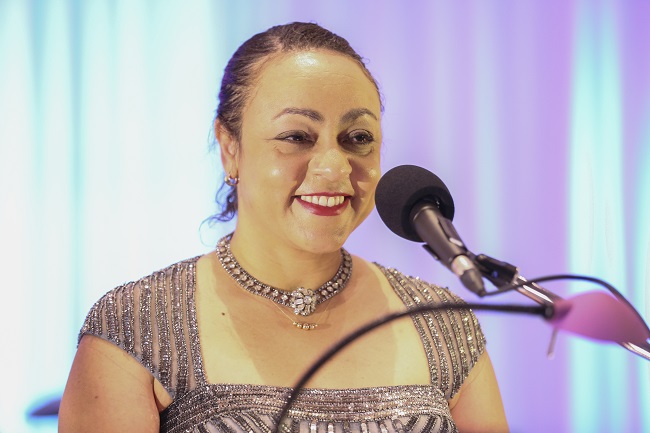

Touring the High Museum of Art with veteran artist, educator and historian Dr. David C. Driskell was a dream come true for University of New Mexico associate professor of art history, Dr. Kirsten Pai Buick. The déjà vu moment took the Chicago native back to her days studying at the University of Michigan where one of her professors originally introduced her to Dr. Driskell’s 1976 seminal work, 200 Years of African American Art.
It’s a book Dr. Buick now refers to as her “academic bible.” “Every word was like gold,” she says. “The ultimate act of generosity is that of the artists who through selection, framing and elevation tell us about ourselves at our most degraded and our most divine.”
The day after the tour, Dr. Buick was awarded the High Museum’s coveted David C. Driskell Prize. She is the 11th overall recipient to earn the $25,000 cash award and a framed original, “African Saint,” created by Dr. Driskell. The Driskell Prize is the only award from any major American museum to recognize art and art history out of the African Diaspora.
So far, the High Museum has raised over $2.7 million, allowing the Atlanta-based cultural center to purchase 46 original pieces of African American art since the prize’s inception in 2005. The real accolade, Dr. Buick says, was spending quality time with Dr. Driskell.
The self-acknowledged “devout academic” found it extremely generous that the visual art icon with a center also named in his honor at the University of Maryland, College Park shared stories about growing up during segregation with her as they approached a Gordon Parks photo installation. “Driskell stands at the nexus of complex history between artist and historian past and future,” says Dr. Buick.
“He acts as a true medium who teaches us not only how to look but also how to see with our minds and with our hearts.” Dr. Driskell, born 83 years ago in Eatonton, GA, was equally flattered to have a groundbreaking award for black art bear his name.
Somewhere in the midst of telling one of his imaginative stories, making a few literary references or wisecracking about how difficult it was for his students to pass any of his classes, Driskell expressed his appreciation.
“Out of the mainstream museums and cultural institutions in the nation, not a single one has singled out an African American artist or historian and named such a prize in honor of an African American artist or art historian,” says an eloquent Driskell. “Our recipients have all been very outstanding. The High Museum set a high standard in American art for other museums to follow.”
Immediately before Dr. Buick was presented with the Driskell Prize, Michael Shapiro, the High Museum’s current COO, acknowledged the Smithsonian American Art Museum’s Pre-Doctoral Fellow as a “seasoned scholar with an impassioned voice.” She produced the first book length examination of Edmonia Lewis, a 19th century African American female sculptor who became popular in Italy.
Originally trained as a medievalist, Dr. Buick remembers being a student and witnessing African American art being largely ignored in both higher education and museums. A true embodiment of Dr. Driskell’s manifesto, Dr. Buick believes earning the Driskell Prize is the direct result of her generous work in higher education.
“I do what I do primarily for my students, both those who I teach directly and those for which I write,” says Dr. Buick during her acceptance speech. “Art cannot exist in a vacuum. To study and to teach art is an act of generosity. It allows us to temporarily spend those identities and identifications that define and separate us. It allows us to concentrate on those acts of generosity.”
Like Dr. Driskell, the High Museum takes pride in being a premier authority on art history domestically and internationally. The Driskell Prize not only immortalizes the contributions that visual artists of color have made in the arts and humanities but also acknowledges individuals whose interests and productivity fully align with Dr. Driskell’s perspective.
“One of the consistencies among the now 11 award winners is not only excellence, but they’re also exceptionally wonderful people,” says Shapiro.
This post was written by Christopher A. Daniel, pop cultural critic and music editor for the Burton Wire. He is also contributing writer for Urban Lux Magazine and Blues & Soul Magazine. Follow Christopher @Journalistorian on Twitter.
Follow the Burton Wire on Twitter @TheBurtonWire or Instagram.








